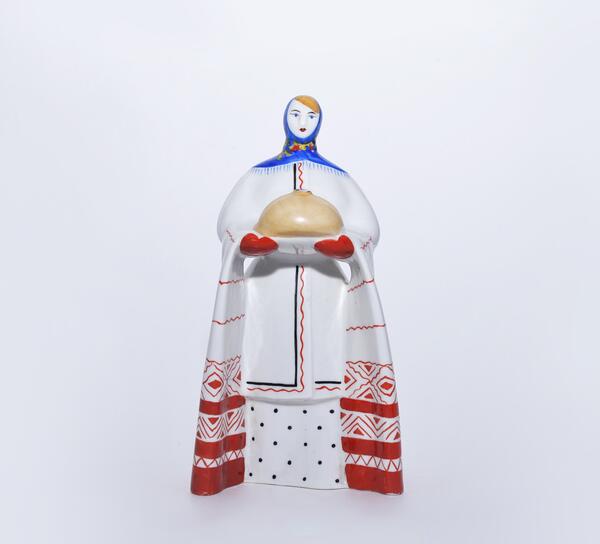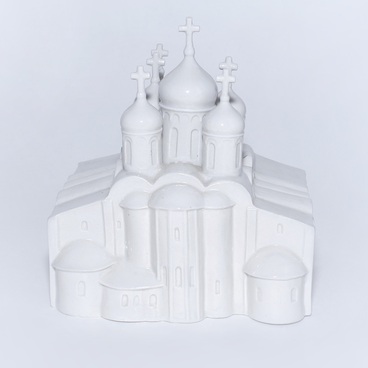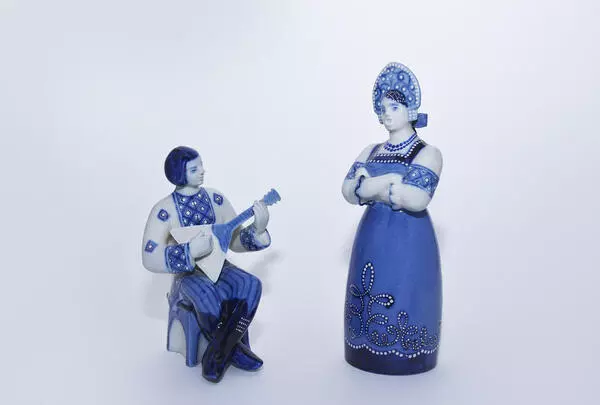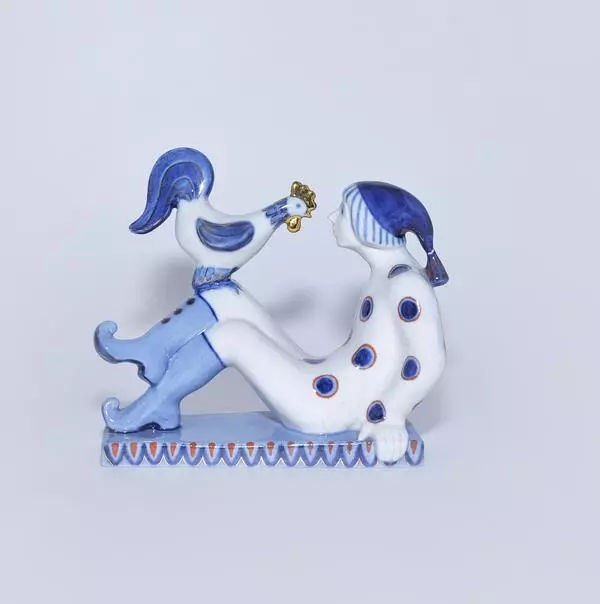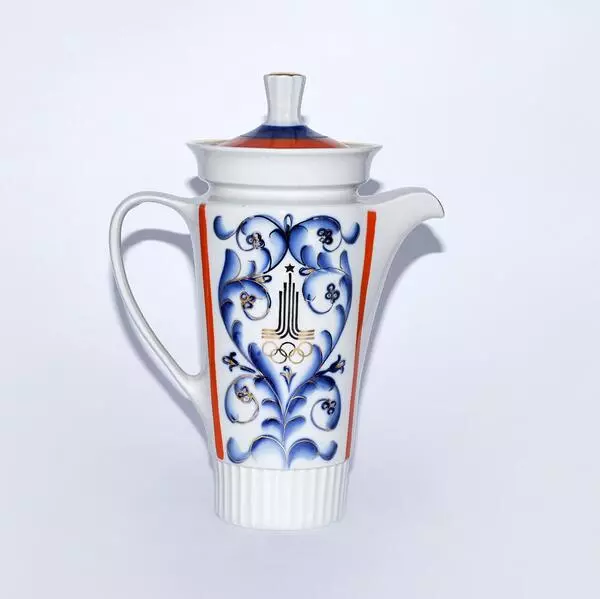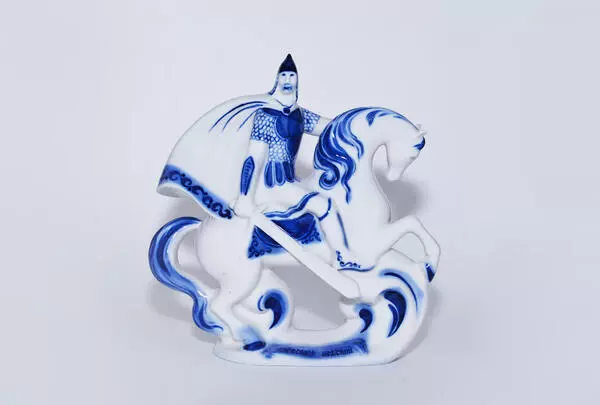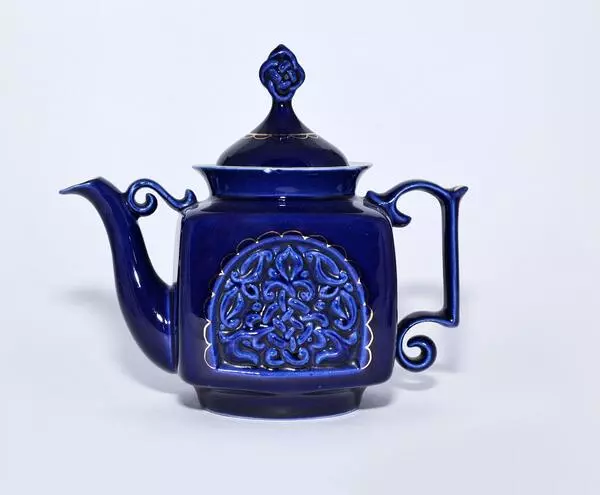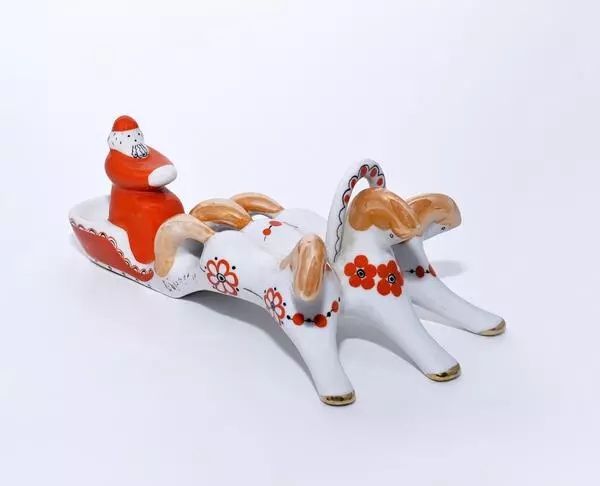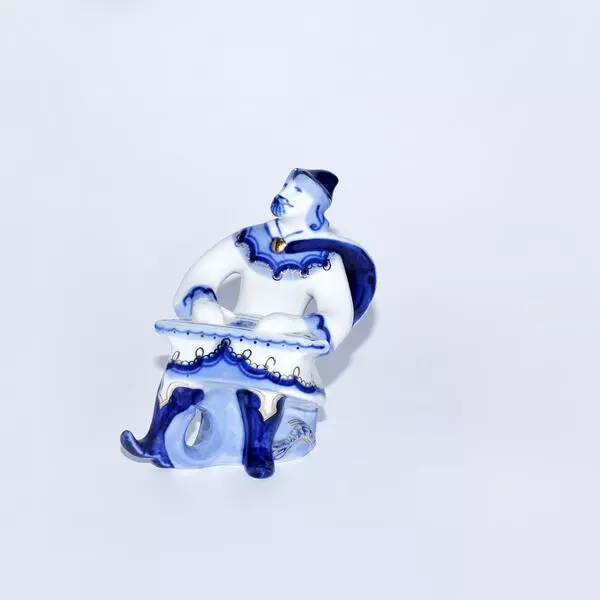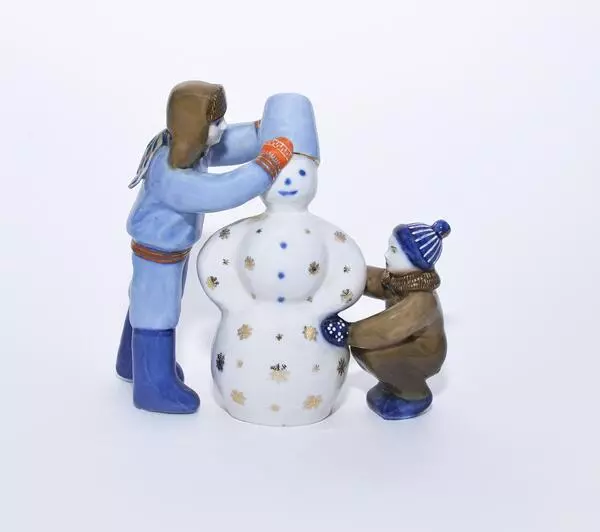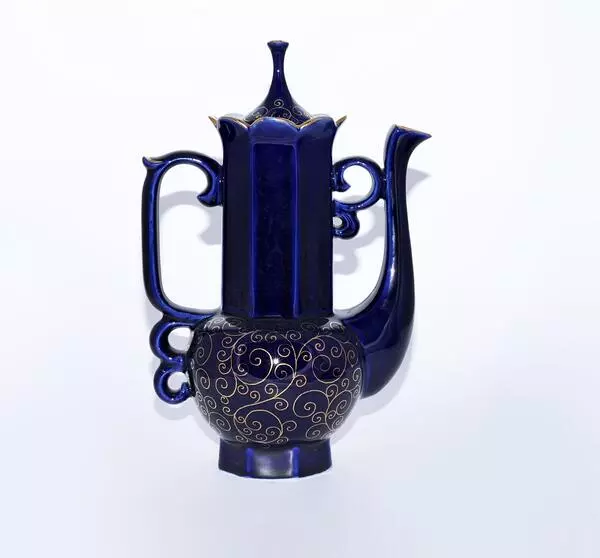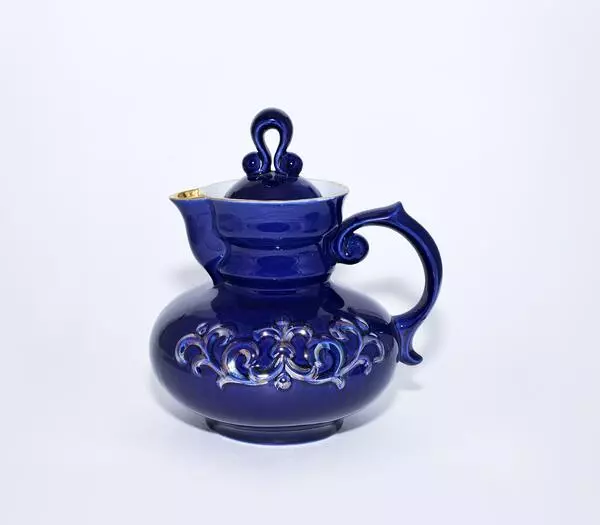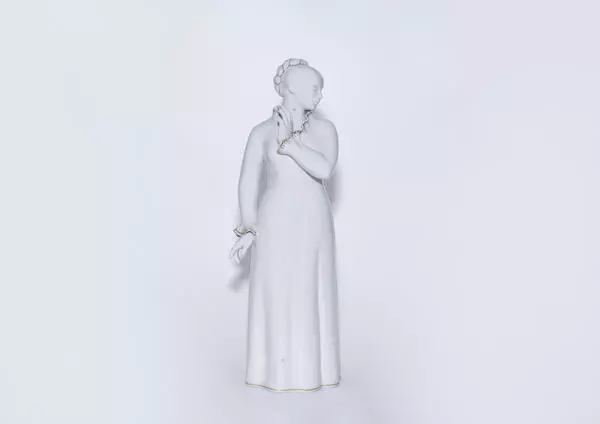The artist Tamara Gavrilova often used the images of ordinary people: folk musicians, singers, buffoons, and jesters. The sculpture “Bread” depicts a woman in a Russian traditional costume: a polka dot sarafan, a fur coat, and a blue shawl with multicolored ornaments. In her hands, she holds bread on a rushnik — a homespun towel. Gavrilova placed a small bowl with salt on the top of the loaf.
The combination of bread and salt had a special meaning for all Slavic peoples: bread symbolized wealth and prosperity, and salt protected from evil witchcraft. Therefore, this dish was often treated to guests to show good intentions and establish trusting relationships. The refusal of bread with salt was considered an insult. In Novgorod, they answered this with a saying: “How can you go from an empty izba like that!” (izba — a traditional Slavic dwelling).
As bread has been treated with respect in Russia since ancient times, there were many rules on how to bake, store and serve it. For example, bread could not be placed on a bare table, without a tablecloth and a rushnik, otherwise, it would lead to a hungry life. In addition, the dried pieces of bread should not be thrown away and instead were given to cattle and birds.
In Russia, they ate a lot of bread: such food was inexpensive and high-calorie, so it quickly saturated people and gave energy for a hard day at work ahead of them. There were several types of bread: the most popular were rye black and wheat white. Different regions had their types of products, for example, lavash and flatbread. The poet Alexander Pushkin wrote during his trip to the Caucasus:
The combination of bread and salt had a special meaning for all Slavic peoples: bread symbolized wealth and prosperity, and salt protected from evil witchcraft. Therefore, this dish was often treated to guests to show good intentions and establish trusting relationships. The refusal of bread with salt was considered an insult. In Novgorod, they answered this with a saying: “How can you go from an empty izba like that!” (izba — a traditional Slavic dwelling).
As bread has been treated with respect in Russia since ancient times, there were many rules on how to bake, store and serve it. For example, bread could not be placed on a bare table, without a tablecloth and a rushnik, otherwise, it would lead to a hungry life. In addition, the dried pieces of bread should not be thrown away and instead were given to cattle and birds.
In Russia, they ate a lot of bread: such food was inexpensive and high-calorie, so it quickly saturated people and gave energy for a hard day at work ahead of them. There were several types of bread: the most popular were rye black and wheat white. Different regions had their types of products, for example, lavash and flatbread. The poet Alexander Pushkin wrote during his trip to the Caucasus:

